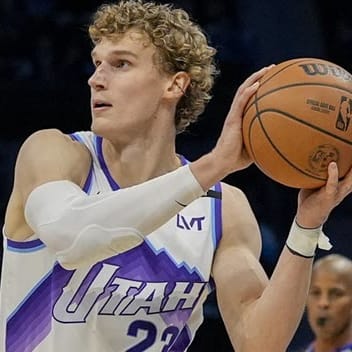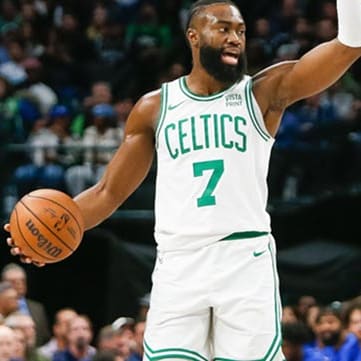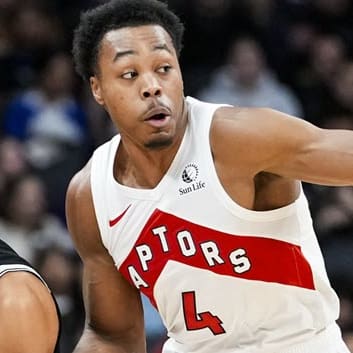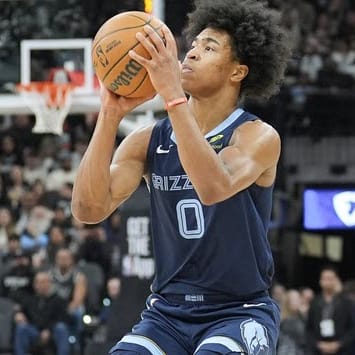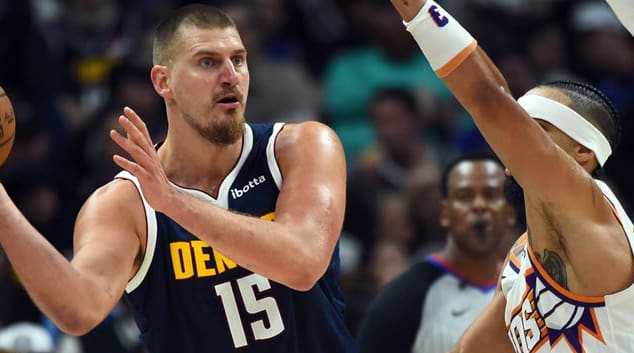My biggest piece of pre-draft advice is to make your own rankings beforehand – never, never, never rely on the rankings provided by your host site. Since making your own ranking from scratch isn't always an option, I'm giving you mine.
Anytime I draft, this is the spreadsheet I base my decisions off of. Print it out or keep it open in a window next to your draft screen. It includes my overall ranks, positional tiers, and overall tiers.
Since I made it, I follow it pretty closely. But you are encouraged to modify it as you see fit. That's why we've published this as a shared Google Sheets file – just go to "file" and click "make a copy" and you'll have yourself your own editable version.
Some notes to help you along the way:
- These are tailored to nine-category roto leagues. I barely change my ranks for head-to-head leagues, but H2H does boost players with extreme strengths and weaknesses such as Russell Westbrook, Andre Drummond, Lonzo Ball, etc.
- Injured players or players in highly unusual situations – specifically Myles Turner, Hassan Whiteside, Isaiah Thomas, DeMarcus Cousins, and Kristaps Porzingis – are given an overall rank of where I would draft them. Their positional tier designations reflect what I expect from them if they are functioning relatively "normally". For Cousins and Porzingis, normally means healthy. For Turner and Whiteside, normally means they maintain a significant role as the primary big man for their teams. For Thomas, normally means that he is both healthy and back to being a relatively high-quality contributor; not recreating his All-NBA 2016-17 season, but also better than the bizarrely awful 2017-18 campaign.
- I am a strong advocate for never drafting a rookie with a top-100 pick. Historically speaking, those picks flop far more often than anything else. After 100, feel free to pick up as many rookies as you like, but if the pick only has two digits, I'm not interested. As such, I'm much lower on Deandre Ayton and Luka Doncic than everyone else. I recognize that reality, and included both inside the top-100 in my Beer Sheet. You still probably won't get either with how low I have them ranked, but that's where I'm willing to at least start considering them.
- Overall Tiers reflects how far I'm willing to stray from my own overall pre-draft rankings. I will almost never draft a player in Tier C if anyone from Tier B is still available. When I reach for someone in a lower overall tier, it is either for positional need or for Donovan Mitchell.
If reaching for positional need, that's when I turn to positional tiers.
If reaching for Donovan Mitchell, it is because I'm in a highly competitive league. Many of the players in Tier B have worrisome injury history, and so if I want a safer floor in my second-round pick, I sometimes reach for Mitchell before taking on the injury risk that comes with a Kyrie Irving, Chris Paul, or Kevin Love. I don't like it, but I've done it twice.
- My positional tiers are designed to be somewhat conservative. They are closer to a player's floor than to his ceiling. This is why there are several situations like that of Larry Nance, a Tier 7 center who I recommend drafting ahead of some Tier 6 centers. Second, my tiers try to reflect the typical production profile for a position. If you want a pure PG, I'd recommend Paul ahead of Irving, even though both are PG eligible and I'd normally take Irving first.
- After the top-100 or so, these rankings become more of a general guideline than a strongly-worded recommendation. At that point, pick the players you want – most of those picks are going to end up on waivers anyways. I feel good about this ranking, but it's totally fine to use pick 112 to grab someone I have outside my top-130.
- Positional tiers reflect eligibility on Yahoo!
- These are not projections: This is the order in which I would pick players. I expect Jabari Parker (102) to finish inside the top-90, but he's missed at least 30 games in three of his four seasons. All the players I have ranked between 85 and 100 might break into the top 80, and have less concerning injury histories. At that stage of the draft I want the high upside more than someone who could get stuck on my bench.
These are not RotoWire's official rankings. To view those, click here.


























